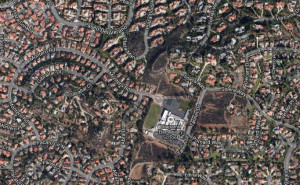Poverty Moving to the Suburbs
Poverty Moving to Suburbs
 The number of people living below the federal poverty line ($23,492 for a family of four in 2012 ) today remains at record highs. But even so, a study by the Brookings institution shows that poverty is moving from the inner cities and rural areas to the suburbs. This is a significant shift compared to 2000 when the urban poor still outnumbered suburban residents living in property. Data shows that between 2020 12, the number of people living in distressed neighborhoods increased by 5 million.
The number of people living below the federal poverty line ($23,492 for a family of four in 2012 ) today remains at record highs. But even so, a study by the Brookings institution shows that poverty is moving from the inner cities and rural areas to the suburbs. This is a significant shift compared to 2000 when the urban poor still outnumbered suburban residents living in property. Data shows that between 2020 12, the number of people living in distressed neighborhoods increased by 5 million.
Even though concentrated poverty still remains the highest in cities, suburban poverty is increasing the fastest between 2020 12, the number of suburban for group by 139%, which was almost 3 times the pace of growth in the cities for poverty.
Poverty Moving to Suburbs
From Wikipedia, the free encyclopedia:
Most Americans will spend at least one year below the poverty line at some point between ages 25 and 75. Poverty rates are persistently higher in rural and inner city parts of the country as compared to suburban areas.
In November 2013 the U.S. Census Bureau said more than 16% of the population lived in poverty, up from 14.3% (approximately 43.6 million) in 2009 and to its highest level since 1993. In 2008, 13.2% (39.8 million) Americans lived in poverty. Starting in the 1980s, relative poverty rates have consistently exceeded those of other wealthy nations. California has a poverty rate of 23.8%, the highest of any state in the country This is updated from the November 2012 estimate of 23.6.
In 2009 the number of people who were in poverty was approaching 1960s levels that led to the national War on Poverty. In 2011 extreme poverty in the United States, meaning households living on less than $2 per day before government benefits, was double 1996 levels at 1.5 million households, including 2.8 million children.
In 2012 the percentage of seniors living in poverty was 14% while 18% of children were. The addition of Social Security benefits contributed more to reduce poverty than any other factor.
Recent census data shows that half the population qualifies as poor or low income, with one in five Millennials living in poverty. Academic contributors to The Routledge Handbook of Poverty in the United States postulate that new and extreme forms of poverty have emerged in the U.S. as a result of neoliberal structural adjustment policies and globalization, which have rendered economically marginalized communities as destitute “surplus populations” in need of control and punishment.
In 2011, child poverty reached record high levels, with 16.7 million children living in food insecure households, about 35% more than 2007 levels. A 2013 UNICEF report ranked the U.S. as having the second highest relative child poverty rates in the developed world.
There were about 643,000 sheltered and unsheltered homeless people nationwide in January 2009. Almost two-thirds stayed in an emergency shelter or transitional housing program and the other third were living on the street, in an abandoned building, or another place not meant for human habitation. About 1.56 million people, or about 0.5% of the U.S. population, used an emergency shelter or a transitional housing program between October 1, 2008 and September 30, 2009. Around 44% of homeless people are employed.
Poverty Moving to Suburbs

Comments are closed.